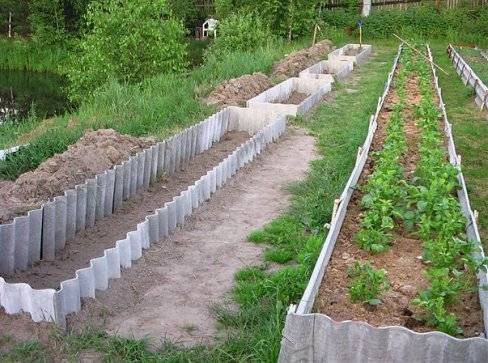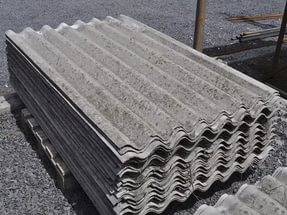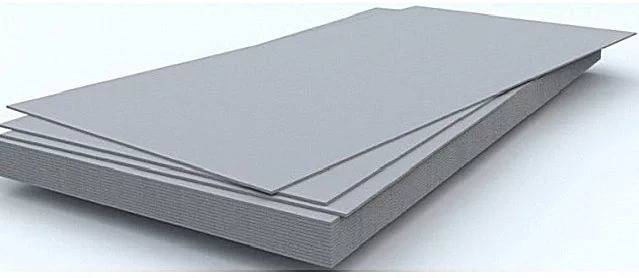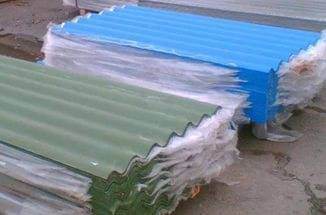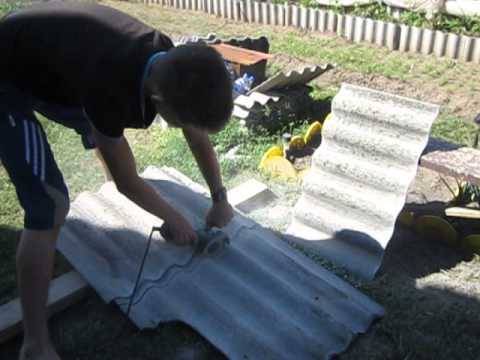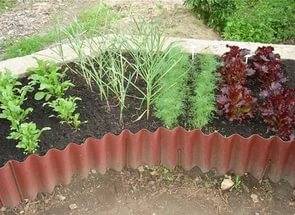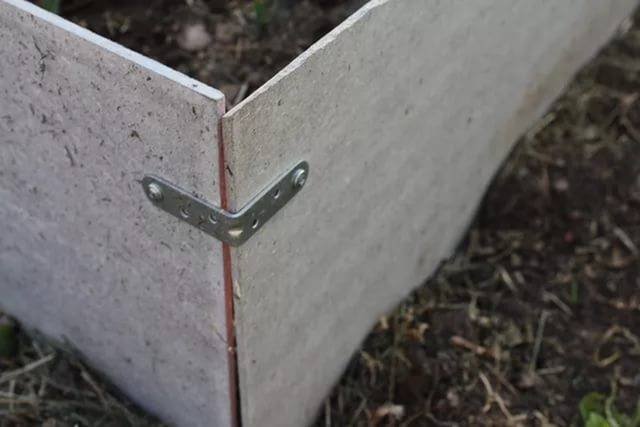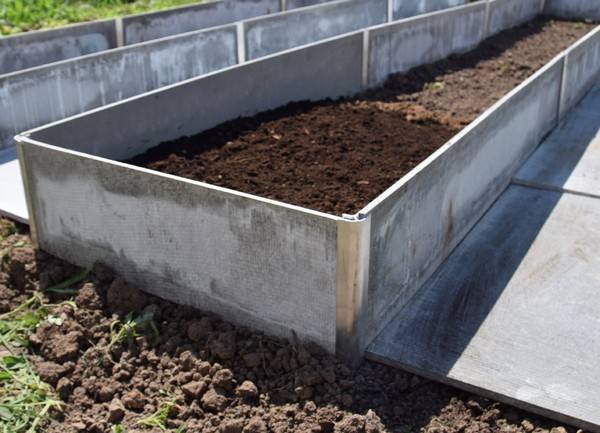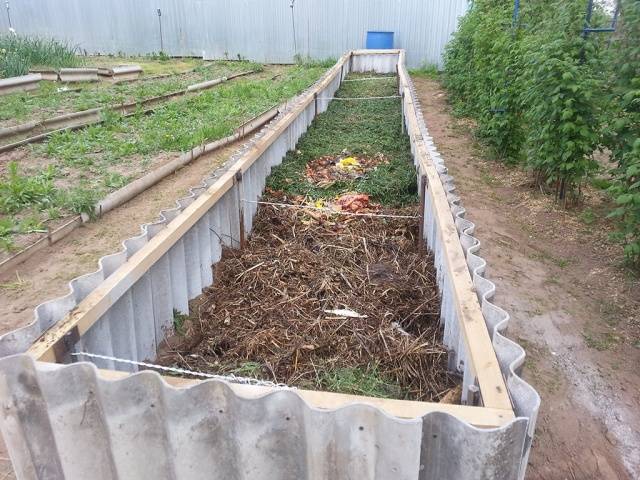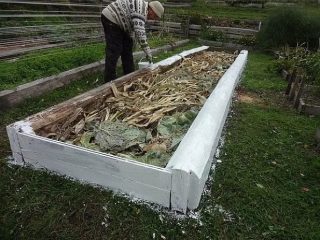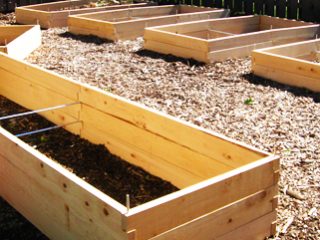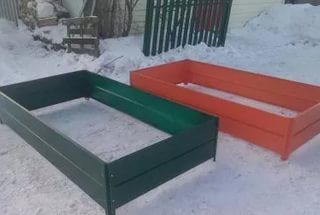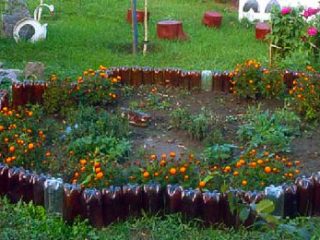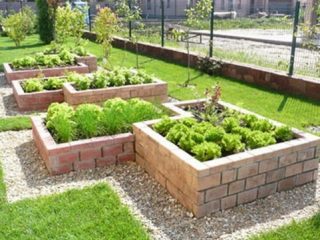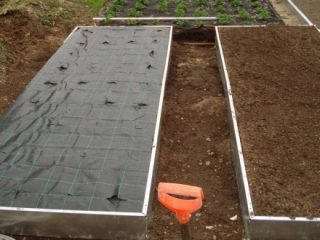Content
Fence garden beds with all available materials. What the owners of a suburban area like most is slate. Inexpensive material allows you to quickly build the sides, and the design is smooth and neat. Every person can make beds from slate with their own hands; you just need to have patience and tools.
Features of asbestos-cement material
Before you start making slate beds, you need to familiarize yourself with the characteristics of this material. The sheets can be used to make beds in the greenhouse and garden. Asbestos cement tolerates any environmental conditions except exposure to high temperatures. But it is unlikely that anyone will light a fire directly at the very edge of the garden bed.
Most often, wavy slate is found in a summer resident's stash. This could be old roofing from a house or barn. This material is better suited for fencing than flat sheets. Asbestos-cement slate is a fragile material, and the waves form peculiar stiffening ribs. It is important to install it correctly here. If such slate is chosen for a garden bed at the dacha, then it is better to cut it into strips across the wave. The fragments will be shorter than from a leaf spread lengthwise, but much stronger.
You will get perfectly smooth sides if you use flat slate for garden beds. However, you must be prepared for the fact that such walls will turn out to be quite fragile. It is optimal to reinforce the perimeter of the side with wooden or metal stakes driven into the ground. It is better to fasten the corners of the fences using metal corners and bolts. The joints of flat sections can be connected with a metal strip and the same bolts.
Slate as a material for bed fencing has its advantages:
- The fairly light material allows you to quickly build the sides;
- slate is resistant to fire, temperature changes and dampness;
- does not corrode or rot;
- service life of at least 10 years;
- the sheet is easy to process;
- finished fences acquire aesthetic appeal.
The big disadvantage is the fragility of the material. Sheets are afraid of shocks and heavy loads. Asbestos cement is not afraid of fire, but from prolonged exposure it overheats and bursts into small pieces.
Deeply dug fences do not allow earth pests to enter the bed, and also prevent the penetration of creeping roots weed. However, thin sheets tend to heat up quickly in the sun. This causes moisture to quickly evaporate from the garden bed, which forces the gardener to water more often.
There is an opinion that slate buried in the ground causes harm to growing plants. Indeed, this is so.Asbestos contained in the material, when decomposed, will release toxic substances that contaminate the soil.
This problem can be solved if country beds enclose with factory-painted slate. As a last resort, the sheets can be painted yourself with acrylic paint or liquid plastic.
Safe work with slate
Working with each type of building material has its own characteristics. Asbestos cement sheet is easy to process, but dangerous to human health. Cutting the sheets into strips for edging the beds will have to be done with a grinder. A large amount of dust containing small particles of asbestos enters the respiratory tract and eyes of a person, which can cause serious illness. When cutting slate, be sure to use a respirator and goggles. It is advisable to pay attention to the direction of the wind so that the dust is blown to the side.
After cutting all strips, asbestos-cement dust must be disposed of. Otherwise, the wind will carry it around the dacha yard, plus the soil where the cutting took place will become contaminated.
Making a raised bed from flat and corrugated slate
So, let's take a closer look at how they are made raised beds made of slate on a summer cottage. You can use wavy and flat sheets, and let's look at the manufacturing process with the first type of slate.
So, we have corrugated sheets available from which we need to make a fence:
- We begin the work by marking stripes across the waves. It is more convenient to draw cut lines on slate with chalk. The height of the strip is determined by the purpose of the bed. Usually it is enough for the side to protrude above the ground from 15 to 30 cm. When using the “warm bed” technology, the height of the side is increased to 50 cm.Approximately the same launch must be left in the ground so that the sides are stable.
- Along the marked lines, strips for the slate beds are cut with a grinder. First, cuts are made in the edges of the sheet so that the corners do not break off. Next, saw the main blade according to the markings.
- The finished strips are dug vertically along the perimeter of the future bed. The soil on both sides of the board is well compacted. For reliability, each fragment of the strip is reinforced with a peg driven into the ground.
At this point, the wavy slate fence is ready, you can fill it inside the ground.
The beds are made from flat slate using a similar system. The same markings are applied, cutting is done with a grinder, but the process of joining the sheets is different. If corrugated slate is simply dug into the ground, then sheets of flat asbestos-cement material are additionally reinforced with metal compounds. The photo shows how two sheets of flat slate are connected using a metal corner. The joints of straight sections are connected using overhead metal strips. All connections are bolted together and then painted to protect against corrosion. Further work is the same as in the version with wavy slate.
Features of arranging a high bed
So, the slate fences are ready, it’s time to make the bed itself:
- First, a fertile layer of soil along with grass is selected from the inside, but is not thrown away, but put aside. The bottom is compacted and lightly watered.
- The next layer is made from wood waste. These can be small branches, wood shavings, etc.
- A layer of waste from any vegetation is poured on top. All this is sprinkled with peat, and previously removed fertile soil with grass is laid on top.
When laying the contents of a high bed, it is advisable to water each layer with water. Moisture will speed up the process of rotting organic matter.
When building high beds, it’s time to remember the fragility of slate. A large mass of soil can crush fences. If the height of the side exceeds 40 cm, the opposite strips are tied together with galvanized wire. How this is done is shown in the photo. If the support pegs are installed only on the outside of the fence, then you will have to drill holes in the slate and pull the wire through them.
Inside a high bed fenced with slate, the soil temperature is 4–5OWith more than in the garden. This allows you to grow early vegetables and root crops. Sometimes gardeners additionally install wire arcs and stretch the film. It turns out to be an excellent greenhouse with fertile soil.
The video shows beds made of slate:
Arrangement of row spacing
If there are a lot of raised beds on your summer cottage, it is important to take care of the row spacing. In addition to the aesthetic appearance of the site, the row spacing additionally strengthens the fence. First of all, the soil between adjacent beds is well compacted. Further design depends on the capabilities of the owner. Paths are made of concrete, laid with paving slabs, etc.
These are, in principle, all the secrets regarding the question of how to make beds from slate on your summer cottage. The work, as you can see, is not difficult, and the benefits will be visible by the amount of harvested crops.
